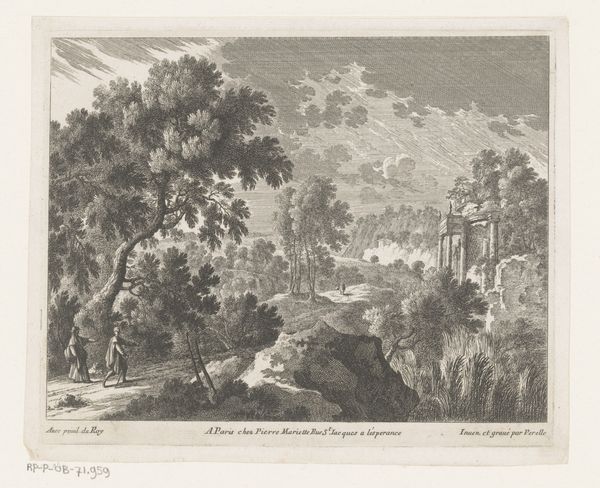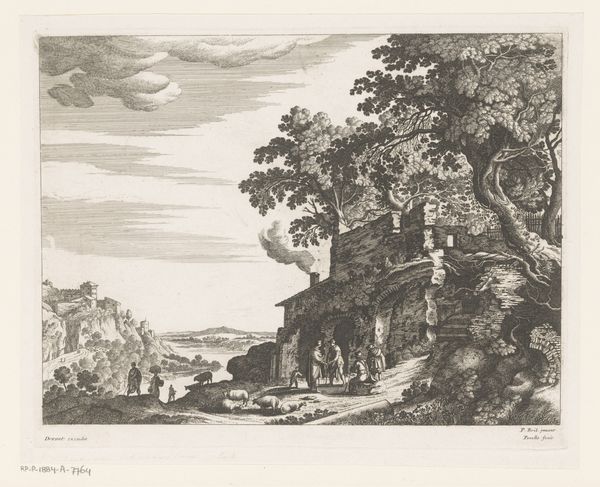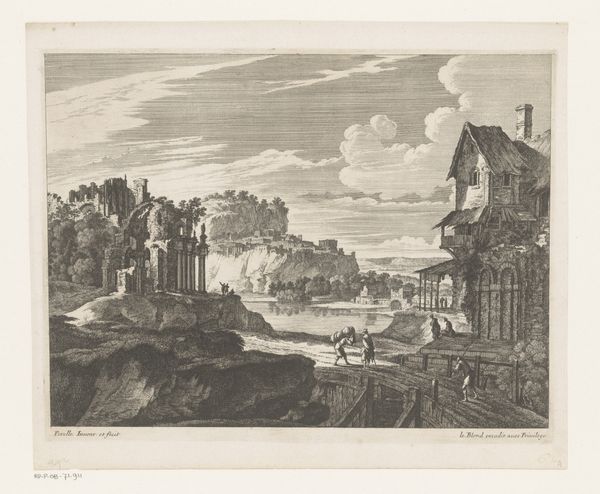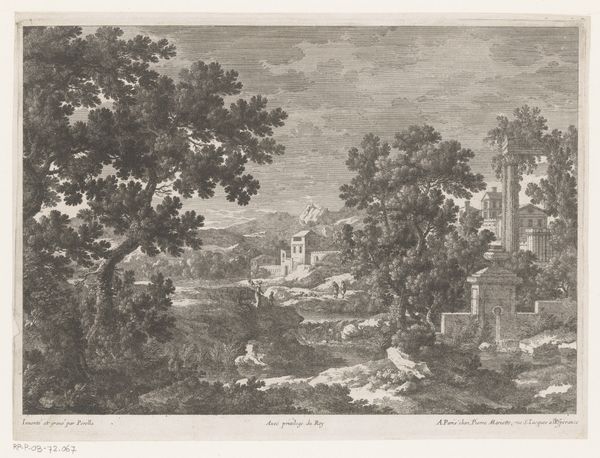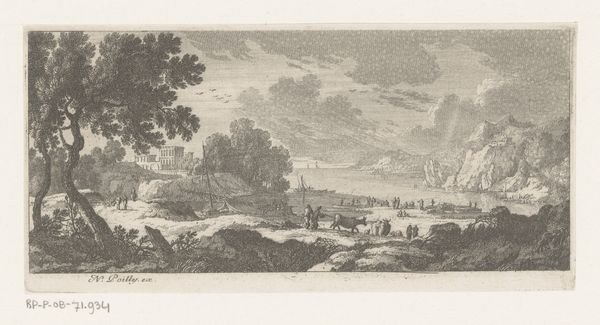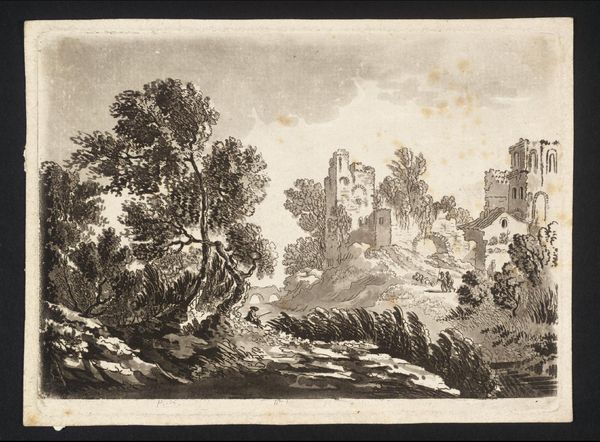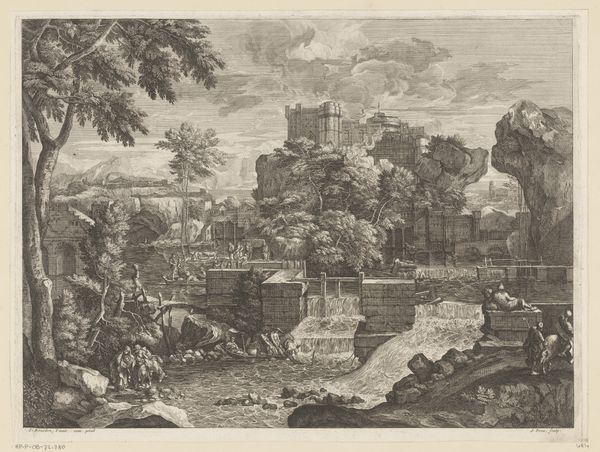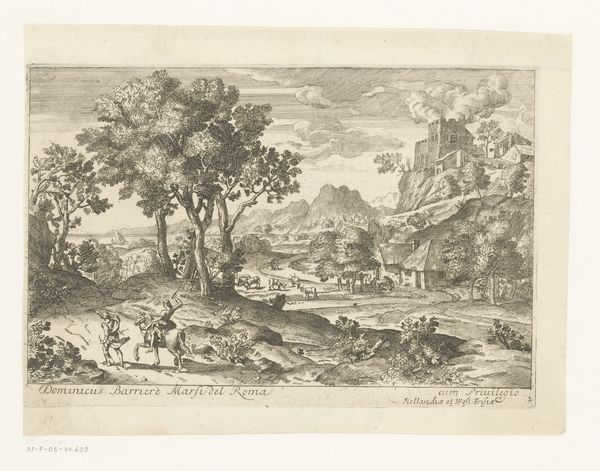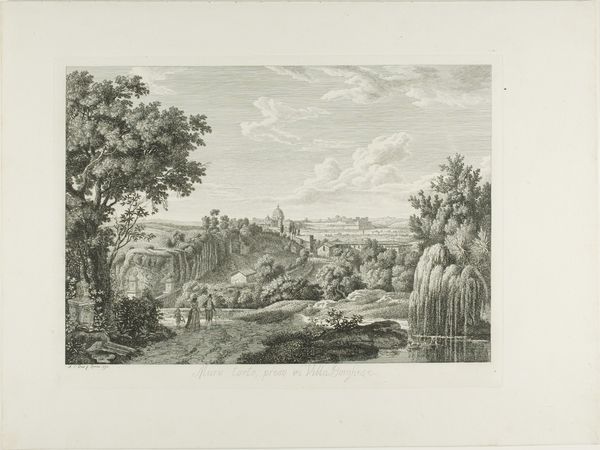
etching, engraving
#
baroque
#
etching
#
old engraving style
#
landscape
#
history-painting
#
engraving
#
realism
Dimensions: height 237 mm, width 301 mm
Copyright: Rijks Museum: Open Domain
Curator: Editor: This etching, "Italian Landscape with Tobias and the Angel" by Nicolas Perelle, dated sometime between 1613 and 1695, depicts a sprawling landscape with ruins, figures, and radiating light. The intricacy of the lines is amazing, it feels like a vast story compressed into a small, delicate piece. What's your take on this, seeing it through a materialist lens? Curator: The immediate thing that strikes me is the process. Consider the labor involved in creating the etching plate itself. The artist meticulously cut away at the metal, a physically demanding task. And it's not just about the artist; it's about the entire network of production—the metalworkers who provided the plate, the printers who produced the final image. We must ask: who owned the means of producing these images, and how did this ownership influence what images were created and circulated? Editor: That's a great point, how the materiality is the base of everything. Do you think the materials themselves, like the metal plate, influenced the style or content in any way? Curator: Absolutely. The nature of etching, with its precise lines and potential for mass production, facilitated the widespread dissemination of certain ideologies and aesthetics. Also, consider that the imagery reflects a romanticized view of rural life – a deliberate construct produced for a specific audience, potentially the urban elite or a class of travelers engaging in the 'Grand Tour'. The "landscape" itself is a product, shaped by economic and social forces. Where were these engravings distributed and sold, and what does this distribution say about patterns of trade, labor and global circulation of images? Editor: So, it's not just the image itself, but the entire material and economic system that created and circulated it that gives the work its real meaning. Curator: Exactly! By examining the materials, the process, and the social context, we gain a much deeper understanding of this image than a purely formal analysis would allow. Editor: Thanks! This definitely helps me see how material conditions affect the way art is produced and understood.
Comments
No comments
Be the first to comment and join the conversation on the ultimate creative platform.
